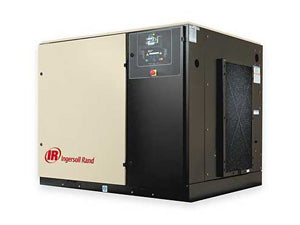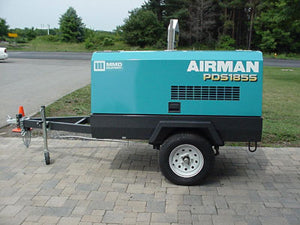- Home
- Compressed Air Requirements
Compressed Air Requirements
Compressor Size
Air compressors are sized by air pressure and air flow. In the US, air pressure is measured in pounds per square inch (psi). Flow is measured in cubic feet of air per minute (cfm). Air flow capacities vary from compressor to compressor—from a few cfm for small electric piston units, to thousands of cfm for high horsepower, in-plant compressors. Just because your compressor can achieve high pressure, does not mean it can provide enough flow to run a Guardair vacuum! Ensure you have proper pressure and flow.

Air Pressure
All Guardair pneumatic vacuums are designed to operate optimally between 90 and 110 psi regulated pressure. Operating vacuums at air pressures less than 90 psi can lead to lower performance. Conversely, operating vacuums at air pressures above 110 psi can increase performance but only to a limited extent. Very high pressures can actually de-focus the venturi, thereby degrading the performance of the vacuum. In addition, the energy required to operate the compressor at higher pressures increases dramatically. To ensure that the vacuum is operating optimally, when the vacuum is running, the pressure gauge should read between 80 and 90 psi.

Air Flow
Guardair vacuums come equipped with different size injector nozzles (green, blue, yellow) to provide desired air consumption, vacuum lift and vacuum flow characteristics. Ensure the compressor's air flow rating meets or exceeds the flow rating of the nozzle. If the compressor has a lower rating, the result will be a noticeable diminish in vacuum performance. To ensure that the vacuum is operating optimally, when the vacuum is running, the pressure gauge should read between 80 and 90 psi. Refer to the specification on each vacuum for air consumption and horsepower requirements.
Air Hose Size
Check the specifications of your Guardair vacuum and be sure to use a properly sized air hose. Air hose ID may always be larger than recommended but never smaller. Operating the vacuum with smaller than recommended air hose will result in noticeably reduced performance.
Another consideration relating to air hose size is pressure loss. Compressed air flowing through air hose experiences a loss in pressure from friction and constrictions. Friction loss is proportional to the length of the hose. Operating pressure, flow rate, air hose inner diameter, and air hose smoothness also determine the loss. The table below shows the pressure loss for 50 feet of common air hose (including couplings) as relates to air hose ID and injector nozzle.
Pressure Loss (psi) for 50 Feet of Common Air Hose |
||||
|---|---|---|---|---|
| Injector Nozzle | Air Flow (cfm) |
Air Hose (ID) | ||
| 3/8" | 1/2" | 3/4" | ||
| Green | 20 | 1 | 1 | 0 |
| Blue | 40 | 9 | 5 | 1 |
| Yellow | 60 | N/R | 13 | 2 |
N/R = Not Recommended
The above table can be interpreted with the following example. Assume a Guardair vacuum featuring blue injector nozzles is connected to an air compressor with a 50 foot long, 1/2" ID air hose. From the table, the air hose will see a 5 psi pressure loss over its length. Therefore, in order to deliver 100 psi at the vacuum (for optimal performance), ideally the compressor's output pressure should be raised to 105 psi (100 + 5). For longer or shorter lengths of hose, the pressure loss is proportional to the length. For example, a 25 foot air hose will have a pressure loss half of the above; a 150 foot air hose, 3 times the above.
A good check that the system pressure is set correctly is to ensure that the vacuum gauge is reading between 80 and 90 psi when the vacuum is running.
Connectors and Fittings
Connectors and fittings can also restrict the air flow. Quick disconnect connectors can restrict the flow considerably. If the vacuum gauge is reading below 80 psi when the vacuum is running, consider increasing the size of the air hose and connectors, or plumbing the air hose directly into the vacuum.
Changing Nozzles
All Guardair pneumatic vacuums come with 3 sets of injector nozzles. The vacuum pressure gauge should read between 80 and 90 psi when the vacuum is running which indicates a proper air supply. If the gauge reads below 80 psi, even after following the above guidelines, consider changing to lower flowing injector nozzles.

